Discover 11 hidden attractions, cool sights, and unusual things to do in Nikkō National Park (Japan). Don't miss out on these must-see attractions: Kegon Falls, Ryūzu Falls, and Mount Nikkō-Shirane. Also, be sure to include Mount Shibutsu in your itinerary.
Below, you can find the list of the most amazing places you should visit in Nikkō National Park (Fukushima).
Table of Contents
Kegon Falls
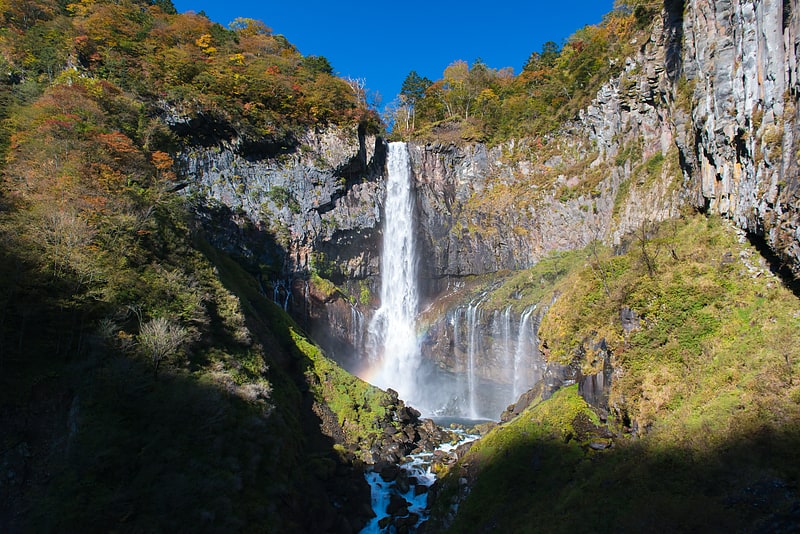
Also known as: 華厳滝
Waterfall with an elevator to the bottom. Kegon Falls is located at Lake Chūzenji in Nikkō National Park near the city of Nikkō, Tochigi Prefecture, Japan. The falls were formed when the Daiya River was rerouted by lava flows. The main falls had a height of approximately 97 metres and about twelve smaller waterfalls are situated behind and to the sides of Kegon Falls, leaking through the many cracks between the mountain and the lava flows.
In the autumn, the traffic on the road from Nikko to Chūzenji can sometimes slow to a crawl as visitors come to see the fall colors.
In 1927, the Kegon Falls was recognized as one of the "Eight Views" which best showed Japan and its culture in the Shōwa period. It is also listed as one of the "Japan’s Top 100 Waterfalls", in a listing published by the Japanese Ministry of the Environment in 1990.
The Kegon Falls are infamous for suicides, especially among Japanese youth.[1]
Address: Chugushi, Nikko, 321-1661 Nikkō National Park
Ryūzu Falls
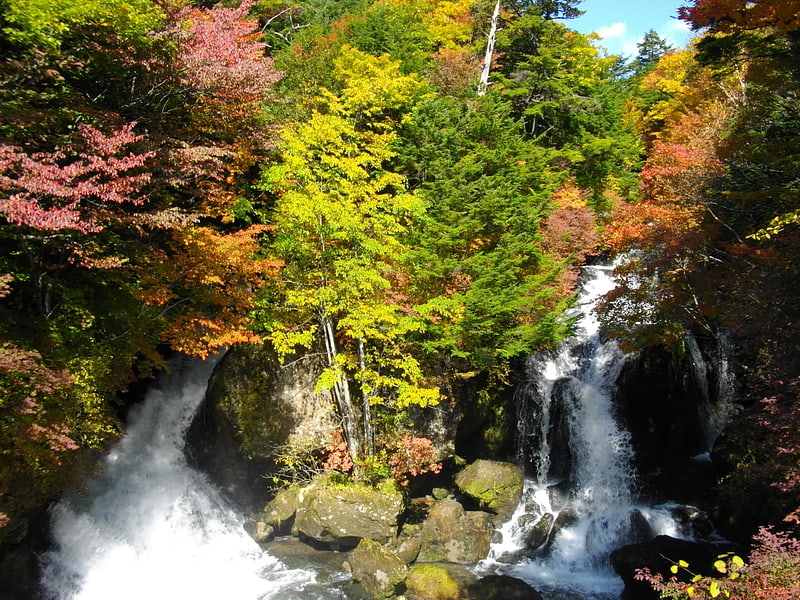
Also known as: 竜頭の滝
Picturesque twin waterfalls and an eatery. Ryūzu Falls is a waterfall located upstream from the Yugawa River which makes its way into Lake Yunoko and Lake Chūzenji. It is located near Nikkō in Tochigi Prefecture, Japan.
Ryūzu can be translated as 'Dragon's Head', and is so named because its twin falls are said to resemble a dragon's head.[2]
Mount Nikkō-Shirane

Also known as: 日光白根山
Volcano in Japan. Mount Nikkō-Shirane is a Stratovolcano in the Nikkō National Park in central Honshū, the main island of Japan. It stands at 2,578 m high. It is the highest mountain in north eastern Japan. Its peak is a Lava dome of andesite. Mt Nikkō-Shirane is listed in the 100 famous mountains in Japan proposed by Kyuya Fukada and also of one of the famous mountains of Tochigi and Gunma prefectures respectively.
It should not be confused with Mount Kusatsu-Shirane elsewhere in Gunma Prefecture. It is located at the boundary between Nikko City, Tochigi Prefecture and Katashina Village, Tone County Gunma Prefecture.
Mt. Nikko Shirane is surrounded by the mountains of the Shirane volcano (Neogene volcano) and is often hidden by clouds throughout the year. From the Kanto Plain only the dome-shaped (Quaternary volcano) summit is visible.
In winter if the weather conditions permit, the white snow fields on the darker surroundings slopes can make the mountain and peak appear exceptionally white.
Its peak is the highest point in both Tochigi and Gunma Prefectures
The area around Shirane Volcano is designated as Nikko National Park in which there are various natural features such as Goshiki pond, Yuno lake, Yu falls, Senjo moor, and Odashiro moor. Being a designated national park, the alpine plants and vegetation are protected.
The plant Sycamore mallow, which naturally appears on this mountain, can hardly be seen at the present time, with the withering of these plants also in the surrounding mountains, which is caused by air pollutants coming from the Tokyo metropolitan area.[3]
Mount Shibutsu

Mountain in Japan. Mount Shibutsu is a serpentine mountain in the north-east of Gunma Prefecture in Japan. It is 2,228.1 m tall and located between Minakami Machi and Katashina Villages. It's one of the 100 Famous Japanese Mountains and is home to a "treasure trove" of alpine plants. It is part of Oze National Park and the Minakami UNESCO Eco Park.[4]
Mount Hotaka

Mount Hotaka is a stratovolcano with its highest peak at the altitude of 2,158m. It is located near Minakami-machi, Kawaba Village, and Katashina Village in the Gunma Prefecture. In order to distinguish it from Mount Hotakadake in the Northern Alps, it is also called as Joshu Hotakayama. This mountain has been selected as one of "100 Famous Japanese Mountains" and the "New 100 Famous Flower of Japanese Mountains".[5]
Lake Chūzenji

Also known as: 中禅寺湖
Lake in Japan. Lake Chūzenji, also called Sea of Happiness, is a scenic lake in Nikkō National Park in the city of Nikkō, Tochigi Prefecture, Japan. It was created 20,000 years ago when Mount Nantai erupted and blocked the river.
The lake has a surface area of 11.62 km² and a circumference of 25 km. Its elevation at the surface is 1,269 m (4,124 ft), and the water reaches a depth of 163 m (508 ft). The Yukawa River is the principal source of water. It drains through the Kegon Falls.
Chuzenji Lake was discovered in 782 by a priest named Shōdō when his group succeeded in climbing Mt. Nantai. Considered sacred, the mountain was closed to women, horses, and cows until 1872. In the middle of the Meiji period and early Showa period, many European embassies built vacation houses around the lake. The former Italian villa has been renewed and is now open to visitors. Other sites around the lake include Futara Shrine built in 790, Chuzenji Temple, and Kegon Falls. In spring, cherry blossoms are blooming. In summer, people can escape the heat and enjoy bird watching and hiking. In fall of course, there are the famous beautiful autumn leaves and in winter there is the Snow and Ice Festival, plus winter sports like skiing and skating.
The lake was a favourite summer haunt of Sir Ernest Satow when he was Britain's envoy in Japan, 1895-1900 as his diaries of that time attest. He constructed a house by the lake which was used as a villa by the British Embassy for over a century.[6]
Sanjō Falls
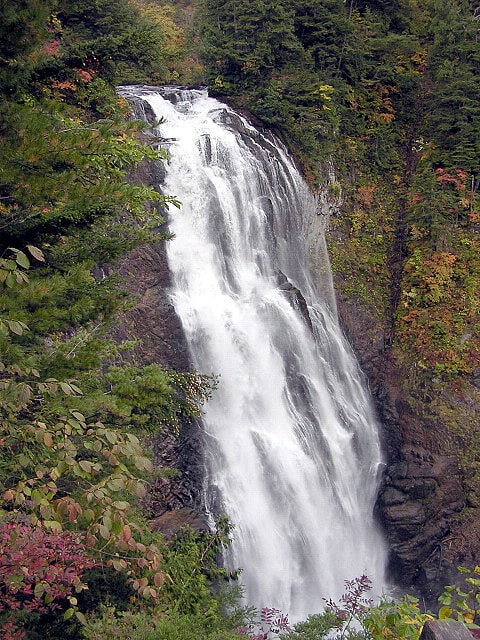
Also known as: 三条の滝
Waterfall in Japan. Sanjō Falls is a waterfall in Hinoemata, Fukushima Prefecture, Japan, on the Tadami River in Oze National Park. It is one of "Japan’s Top 100 Waterfalls", in a listing published by the Japanese Ministry of the Environment in 1990.[7]
Mount Hiuchigatake
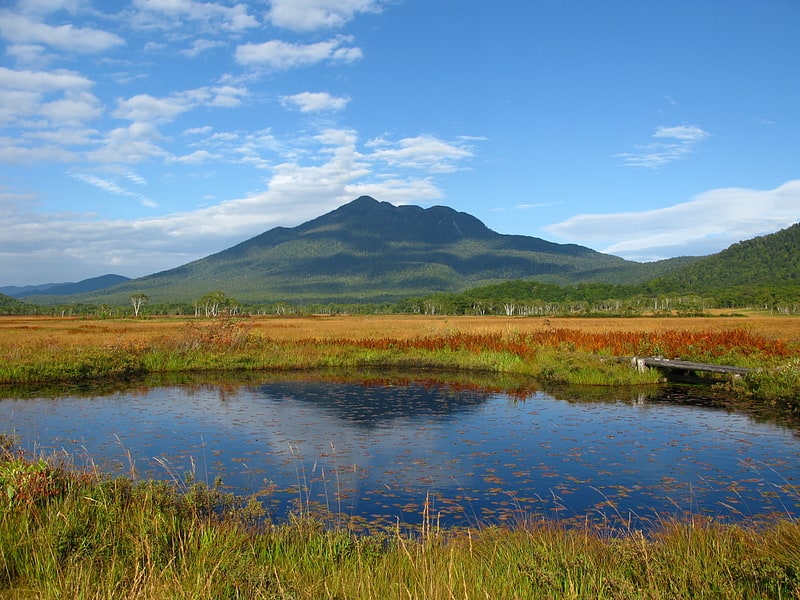
Also known as: 燧ヶ岳
Stratovolcano. Hiuchi, also Hiuchigatake is a 2,356m tall stratovolcano mountain in Oze National Park, and located in Hinoemata Village, Minami-Aizu gun, Fukushima Prefecture, Japan. This is the highest mountain in Tōhoku region. The volcano rises in the north of Lake Ozenuma. It is one of the 100 Famous Japanese Mountains.[8]
Mount Hiragatake
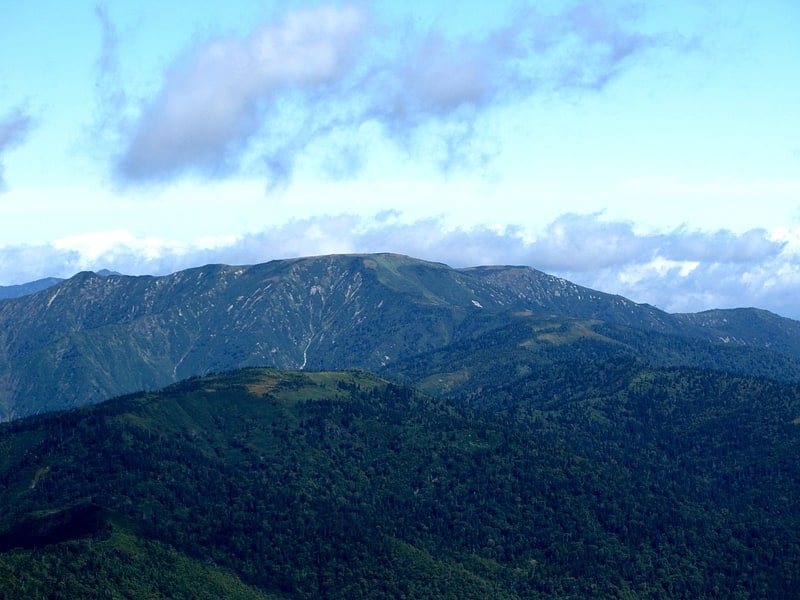
Also known as: 平ヶ岳
Mountain in Japan. Mount Hiragatake is one of the 100 Famous Japanese Mountains. It lies on the border between Gunma and Niigata prefectures.[9]
Mount Tanigawa
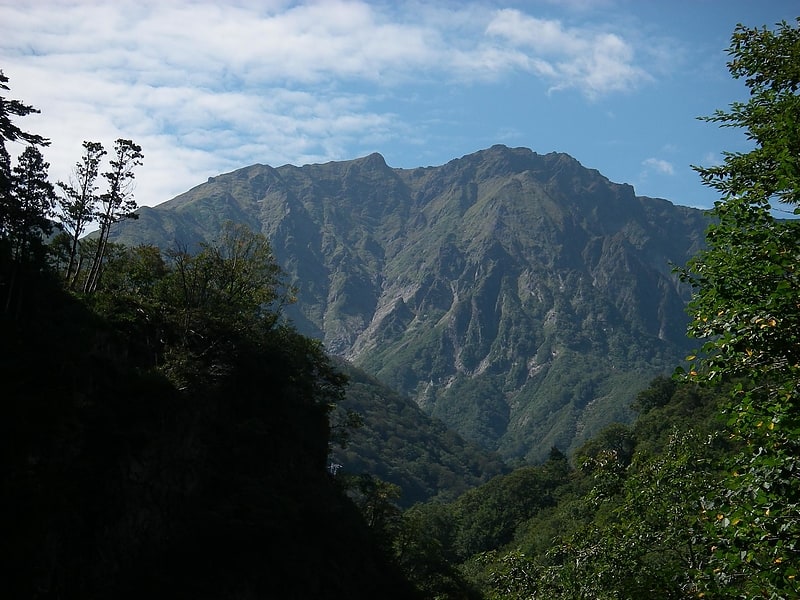
Also known as: 谷川岳
Mountain in Japan. Mount Tanigawa is a 1,977 m mountain on the border of Gunma Prefecture and Niigata Prefecture in Japan. It is one of the 100 famous mountains in Japan.[10]
Mount Nantai
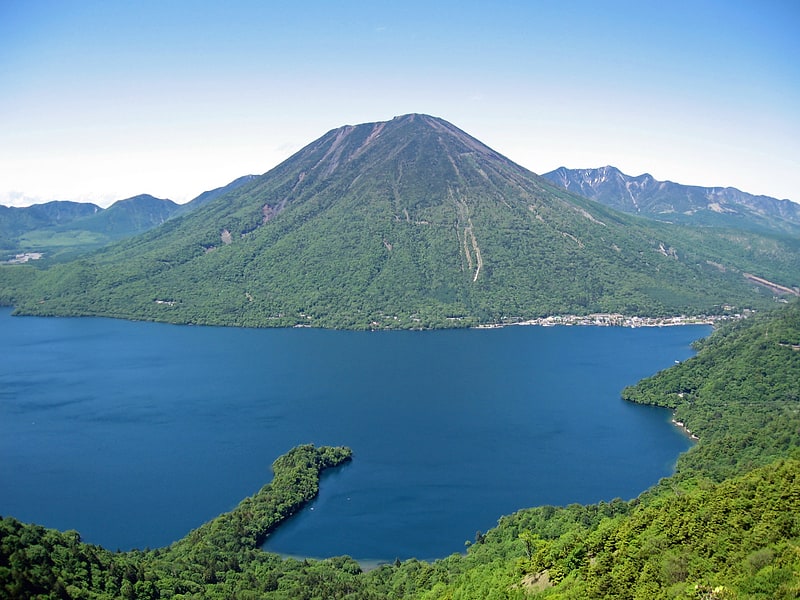
Also known as: 男体山
Stratovolcano in Japan. Mount Nantai is a stratovolcano in the Nikkō National Park in Tochigi Prefecture, in central Honshū, the main island of Japan. The mountain is 2,486 metres high. A prominent landmark, it can be seen on clear days from as far as Saitama, a city 100 km away.
Alongside Mount Nikkō-Shirane, Mount Nantai is one of the newest volcanic edifices in the National Park. Scientific studies of the volcano's geological structure began in 1957 and have established that it was formed roughly 23,000 years ago and that its last eruption was 7000 years ago. The volcano was classified as active by the Japan Meteorological Agency in June of 2017.
Since its first known ascent by Buddhist monk Shōdō Shōnin in the 8th century AD, Mount Nantai has become a sacred mountain and a site of pilgrimage in Buddhism and Shinto. As such, it is currently maintained by Futarasan jinja, a Shinto shrine whose go-shintai (御神体) constitutes Mount Nantai. With Tōshō-gū and Rinnō-ji, the site forms the Shrines and Temples of Nikkō, a UNESCO World Heritage Site. Archaeological excavations conducted here from the 19th to 20th centuries have unearthed many artifacts, dating from the end of the Nara period in the 8th century AD to the Edo period from the 17th to 19th centuries. A few of these have been declared Important Cultural Properties by the Japanese Agency for Cultural Affairs.
Mount Nantai is listed among the 100 Famous Japanese Mountains as written by mountaineer and author Kyūya Fukada.[11]